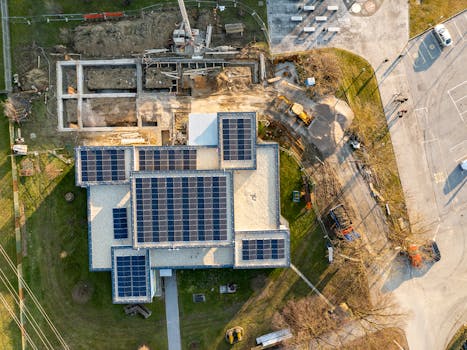
Sustainable Cities: How Europe is Shaping Eco-Friendly Lifestyles by 2025
Sustainable cities, eco-friendly lifestyles, and green infrastructure are becoming increasingly important in Europe, as the continent strives to reduce its environmental footprint and create a better future for its citizens. By 2025, many European cities are aiming to become carbon neutral, with a focus on renewable energy, sustainable transportation, and innovative urban planning.
Introduction to Sustainable Cities
Sustainable cities are urban areas that are designed to minimize their impact on the environment, while also providing a high quality of life for their citizens. This can include features such as green spaces, renewable energy sources, and sustainable transportation systems. In Europe, many cities are already making significant strides in this area, with a focus on creating eco-friendly lifestyles and reducing carbon emissions.
Green Infrastructure in European Cities
Green infrastructure is a key component of sustainable cities, and many European cities are investing heavily in this area. This can include features such as parks, gardens, and green roofs, which help to absorb carbon dioxide, reduce urban heat islands, and improve air quality. For example, the city of Copenhagen has implemented a comprehensive green infrastructure plan, which includes the creation of new parks and green spaces, as well as the use of green roofs and walls to reduce stormwater runoff and improve air quality.
Renewable Energy in European Cities
Renewable energy is another key component of sustainable cities, and many European cities are making significant investments in this area. This can include features such as wind turbines, solar panels, and biomass energy, which help to reduce dependence on fossil fuels and lower carbon emissions. For example, the city of Barcelona has implemented a comprehensive renewable energy plan, which includes the installation of solar panels on public buildings and the use of wind turbines to generate electricity.
Innovative Urban Planning in European Cities
Innovative urban planning is also playing a key role in the development of sustainable cities in Europe. This can include features such as compact and connected urban design, which helps to reduce the need for personal vehicles and promote walking, cycling, and public transportation. For example, the city of Stockholm has implemented a comprehensive urban planning strategy, which includes the creation of compact and connected neighborhoods, as well as the use of innovative transportation systems such as self-driving buses and hyperloop connections.
Conclusion
In conclusion, Europe is leading the way in creating sustainable cities and eco-friendly lifestyles, with a focus on green infrastructure, renewable energy, and innovative urban planning. By 2025, many European cities are aiming to become carbon neutral, and are making significant investments in this area. As the world continues to urbanize, it is likely that other cities will follow Europe’s lead, and strive to create sustainable and eco-friendly lifestyles for their citizens.






